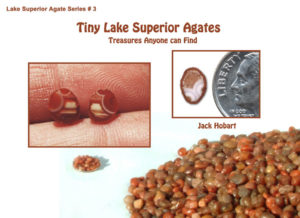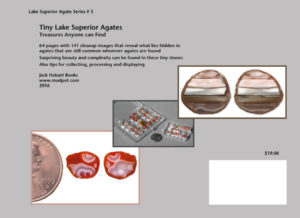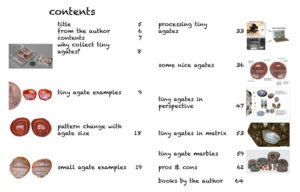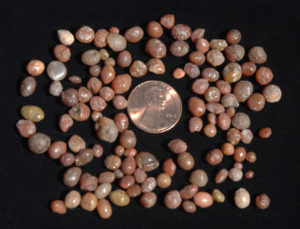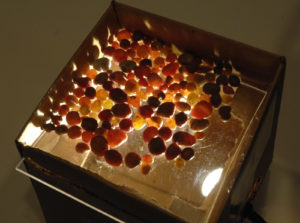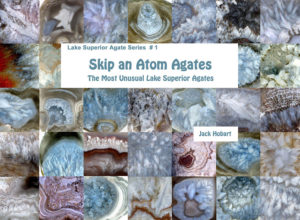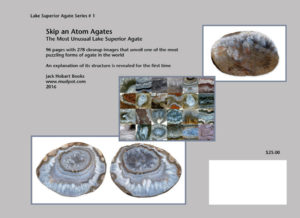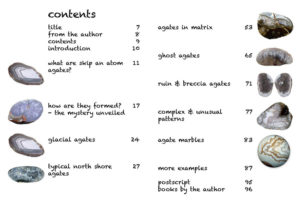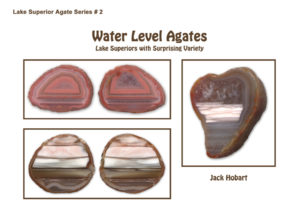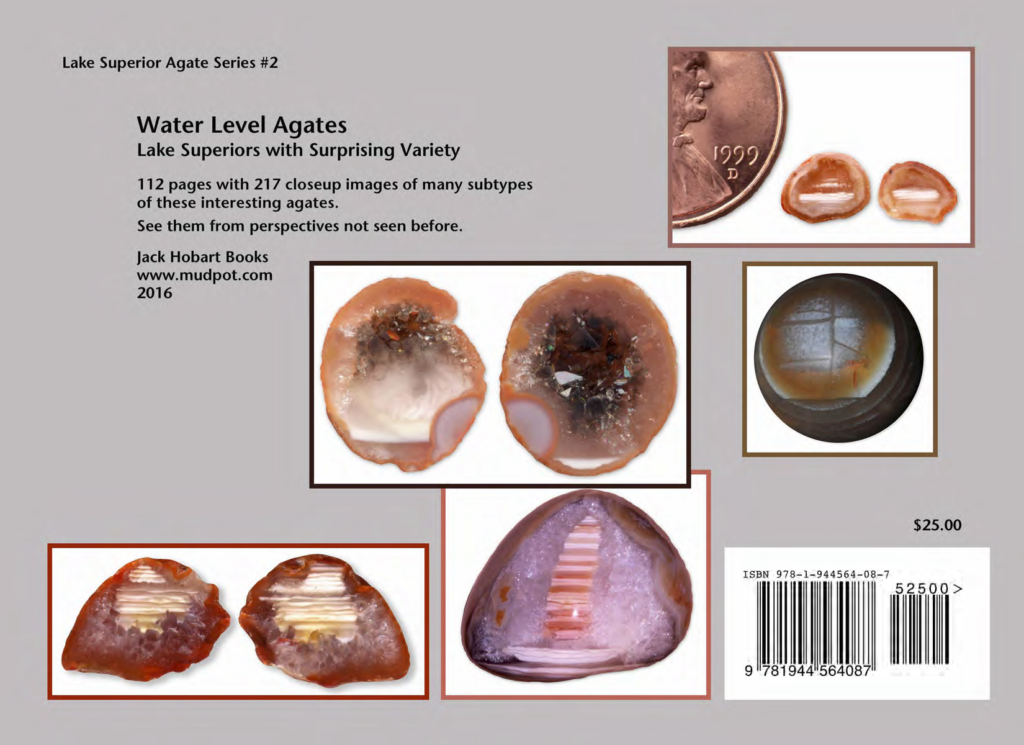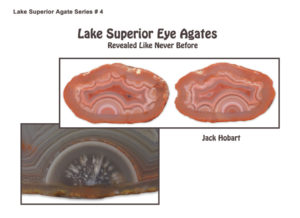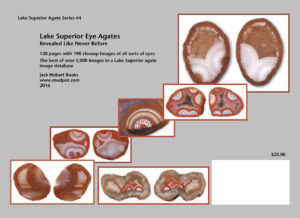List of Books in the Lake Superior Agate Series:
- Skip an Atom Agates, The Most Unusual Lake Superior Agates – in print
- Water Level Agates, Lake Superiors with Surprising Variety – pending
- Tiny Lake Superior Agates, Treasures Anyone can Find – in print
- Lake Superior Eye Agates, Revealed Like Never Before – pending
Tiny Lake Superior Agates
Corrections and Additions:
Page 25 upper right image. Its height is 1.17cm, not 1.71cm.
Tip: A technique for safely cutting the tiniest agates
The tiny agate processing discussion on page 33 did not show how to cut the smallest agates. A new way to safely and precisely cut the tiniest agates has just been developed. The tiniest agates shown in the picture below can be cut by gluing them to a wooden “popsicle” stick using 5 minute epoxy as in the second picture. Click to enlarge the picture to see that the agate on the right has a visible sawcut from a Pro-Slicer 4″ x 0.004″ blade, used to cut every one of the tiny agates in this book. this agate had been dislodged in a previous cutting attempt using too little epoxy.
Much smaller agates can be cut – down to less than 2mm in diameter! The downside is that those smaller than 3mm begin to lose their pattern when sanding to flatten and polish them. Such stones should still be flattened on one side, as recommended in the book. The goal of cutting them is to have a display with two roughly-similar patterns, so losing one half would defeat the purpose.
After cutting, the stones can be polished while still on the wood, but I prefer to remove them and hold them on a fingertip. The stones can be removed from the wood by a combination of starting a cut in the epoxy all around the stone with a sharp blade, followed by cutting the wood with wire cutters, if necessary. Epoxy remover fluid is not necessary. Usually a single-edge razor blade is sufficient.
Tip: “Candling” your bag of agate finds to remove those with no pattern inside
Before supermarkets, eggs were held up to the light to identify bad ones before breaking them. A similar process can be used to filter out the clear agates before cutting them. The easiest way is to put a layer of whole agates (medium to tiny size) on a glass or acrylic sheet, then shine a light on them from below. Three groups should be created: (1) opaque-containing enough material to support an internal pattern, (2) partially hazy and (3) obviously clear and destined to a glass jar for display whole. I recommend that category 2 be created so that you can assess your visual judgement by cutting them before discarding any of the candidate agates.
This is a simple little light box I created to view a handful of tiny agates at a time without spilling them all over. Slits were cut in opposite sides of a 6″ cube cardboard box. Holes for a small wooden dowel support were made in the opposite (upper) side of the box and an acrylic sheet inserted from the other side, resting on the dowel. Since it is a half inch below the top, the agates don’t roll out of the box. A hole in the bottom allows a flexible desklight to shine up at the agates, although a flashlight could be used in the field. I found that over 1/3 of the stones had no pattern in them. Most of those I placed in my category 2 (about 5%) were cut to reveal patterns even though fairly transparent, justifying this extra step.
Skip an Atom Agates
Why write a book about rare agates that few have ever seen?
All of my books are based upon thousands of closeup images showing details that are generally overlooked by the casual observer. When many images are compared for a specific topic, new discoveries are made and many interesting facts result. The closeup or high-speed images reveal many hidden patterns and beauty. One doesn’t need to actually travel to a site or own mineral specimens to enjoy them, although traveling to mudpots or acquiring some mineral specimens definitely enhances the experience.
Skip an atom agates are an excellent example. These uncommon agates were misnamed in 1940 and misunderstood until recently. Once this large collection of images was compiled and displayed in closeup collages of pictures (as seen on the front and back covers of the book), clues to their formation became obvious to Dr. Wayne Sukow, a noted expert far more knowledgeable than this author. Unveiling of the mystery of their formation is presented in an early book chapter. It involves recognition of calcite crystals originally formed in the agate nodules, then converted to agate over time, a process called the creation of pseudomorphs.
With so many agate examples presented in the book, one can see the many mysteries of these agates. My favorites are what I call “Ghost Agates” for which a chapter is devoted. An example of these unusual agates is shown. Its formation seems to indicate that crystal pseudomorphs can actually grow by means of additional flow of mineral-laden fluids through an existing banding structure. Puzzling and remarkable!
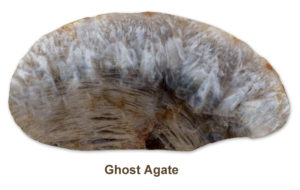 I’ve been asked about availability of these agates. Unfortunately, the only one’s I’ve ever seen are from Flood Bay. Most were included in the book chapter. Only a few percent show ghost patterns. They aren’t visible on the surface, so a relatively large agate must be cut in half to unveil ghosting. Hopefully, with added publicity, more examples will be found. Stay tuned.
I’ve been asked about availability of these agates. Unfortunately, the only one’s I’ve ever seen are from Flood Bay. Most were included in the book chapter. Only a few percent show ghost patterns. They aren’t visible on the surface, so a relatively large agate must be cut in half to unveil ghosting. Hopefully, with added publicity, more examples will be found. Stay tuned.
Corrections and Additions:
None yet.
Books Not Yet in Print
Water Level Agates
Lake Superior Eye Agates












